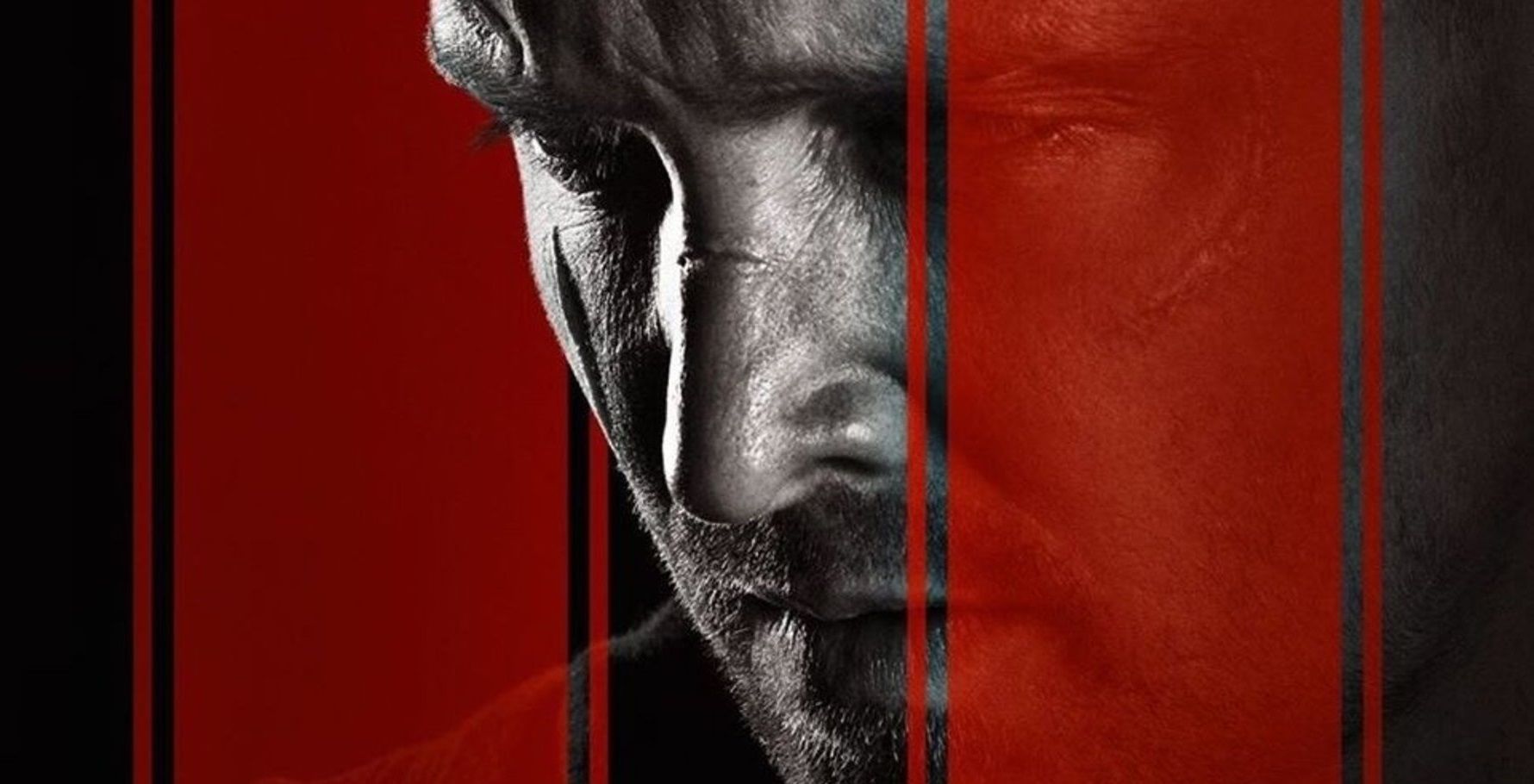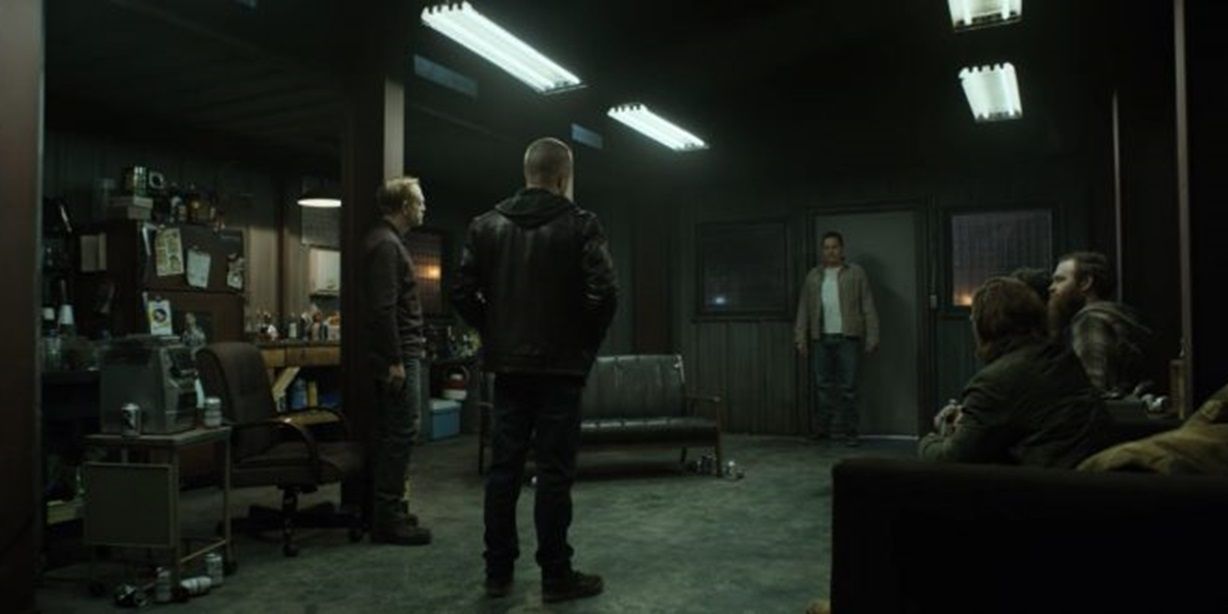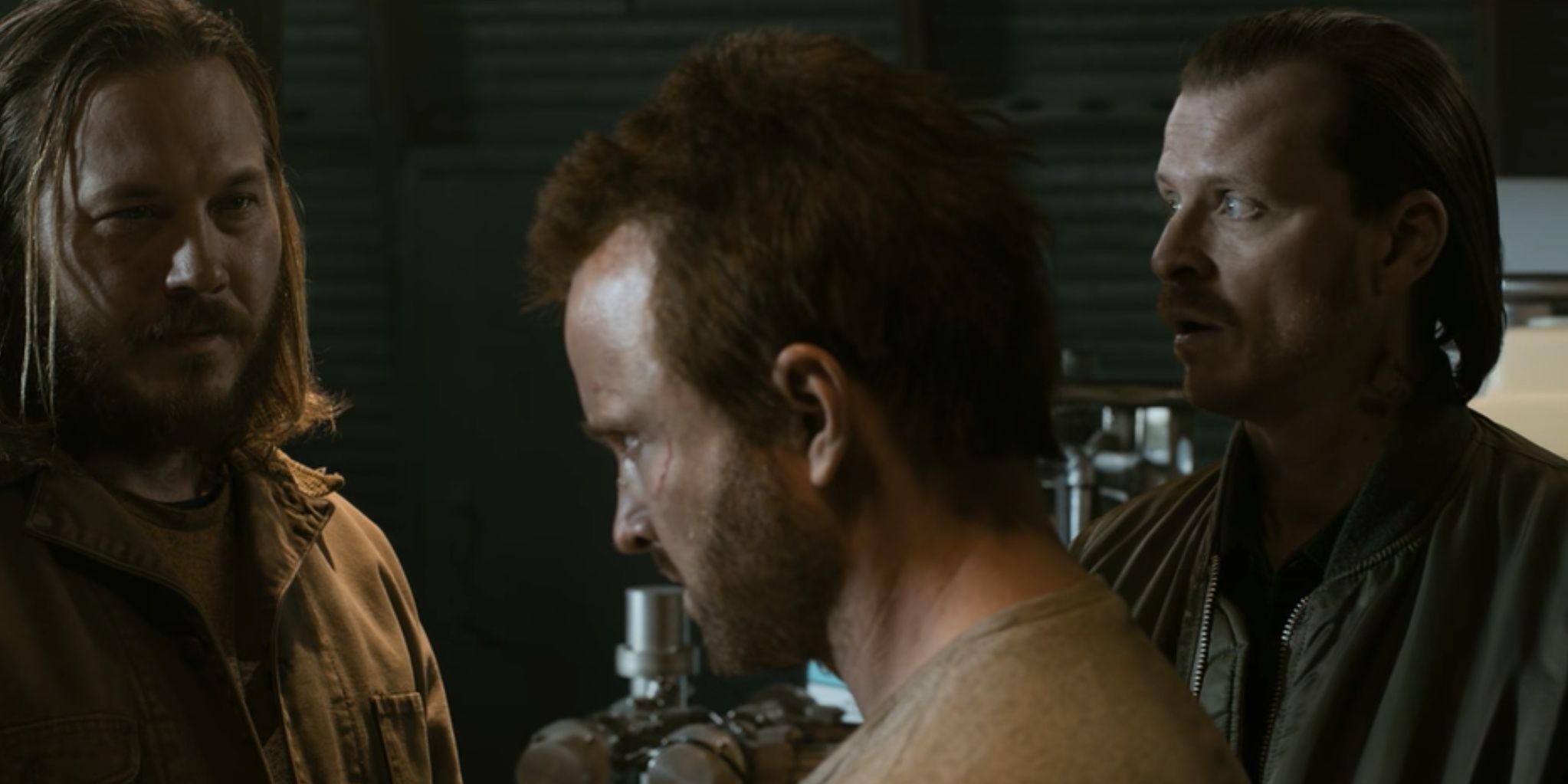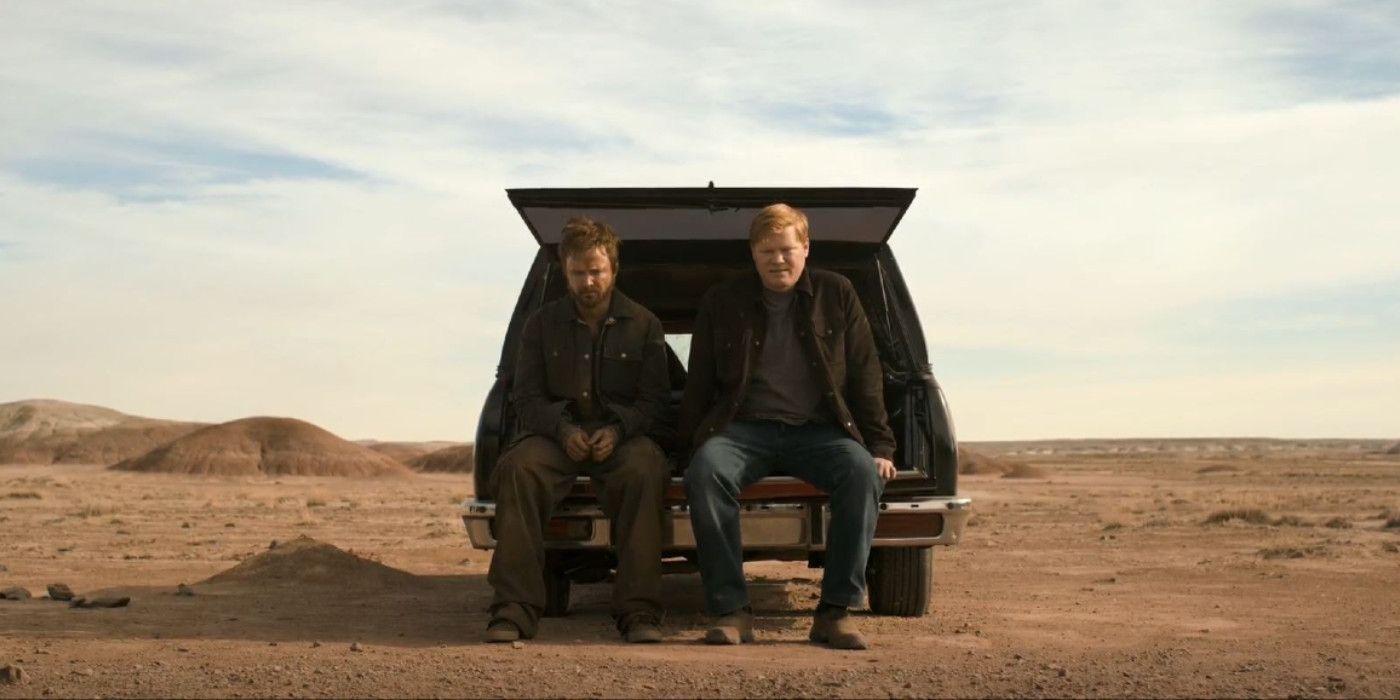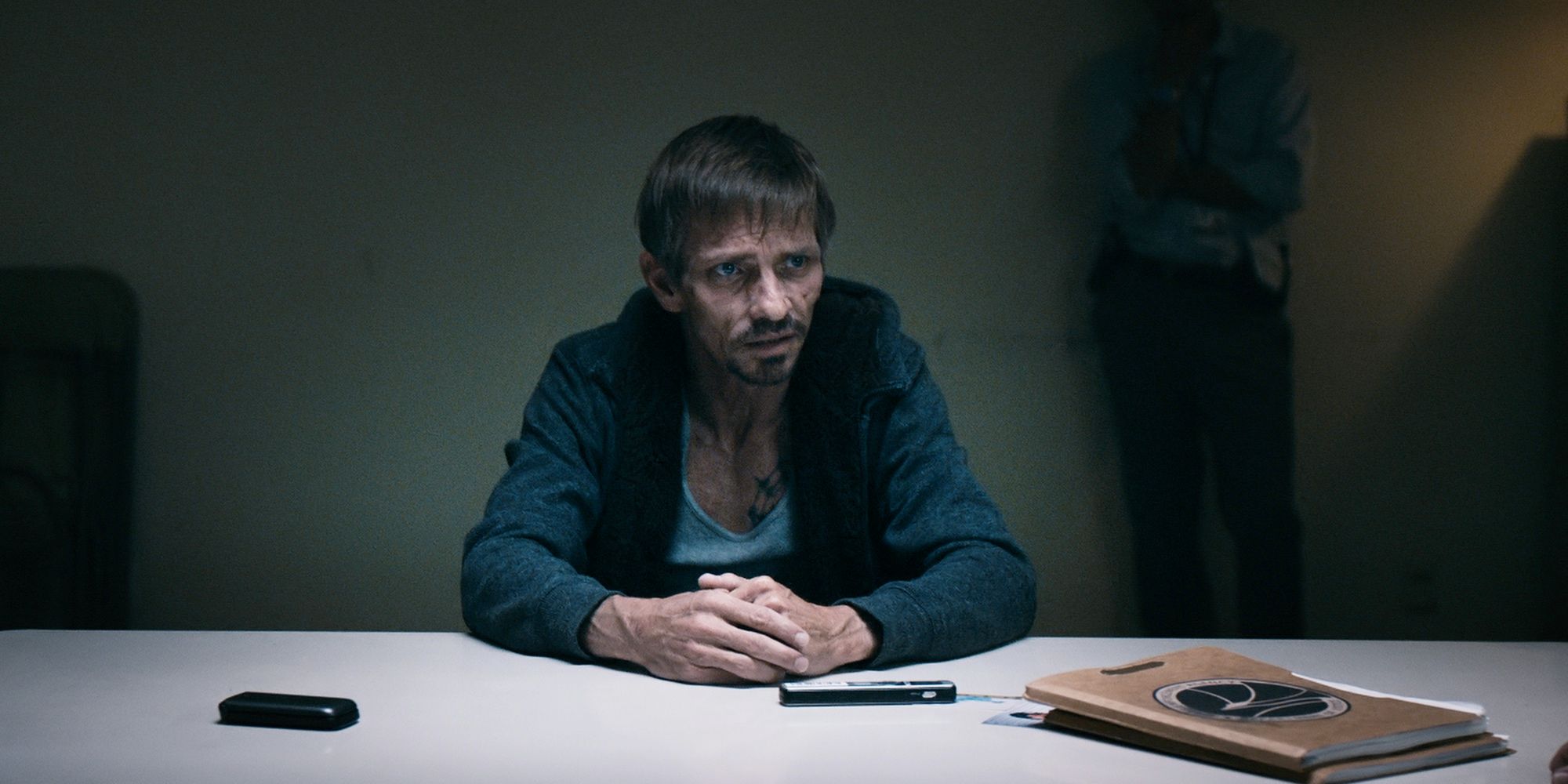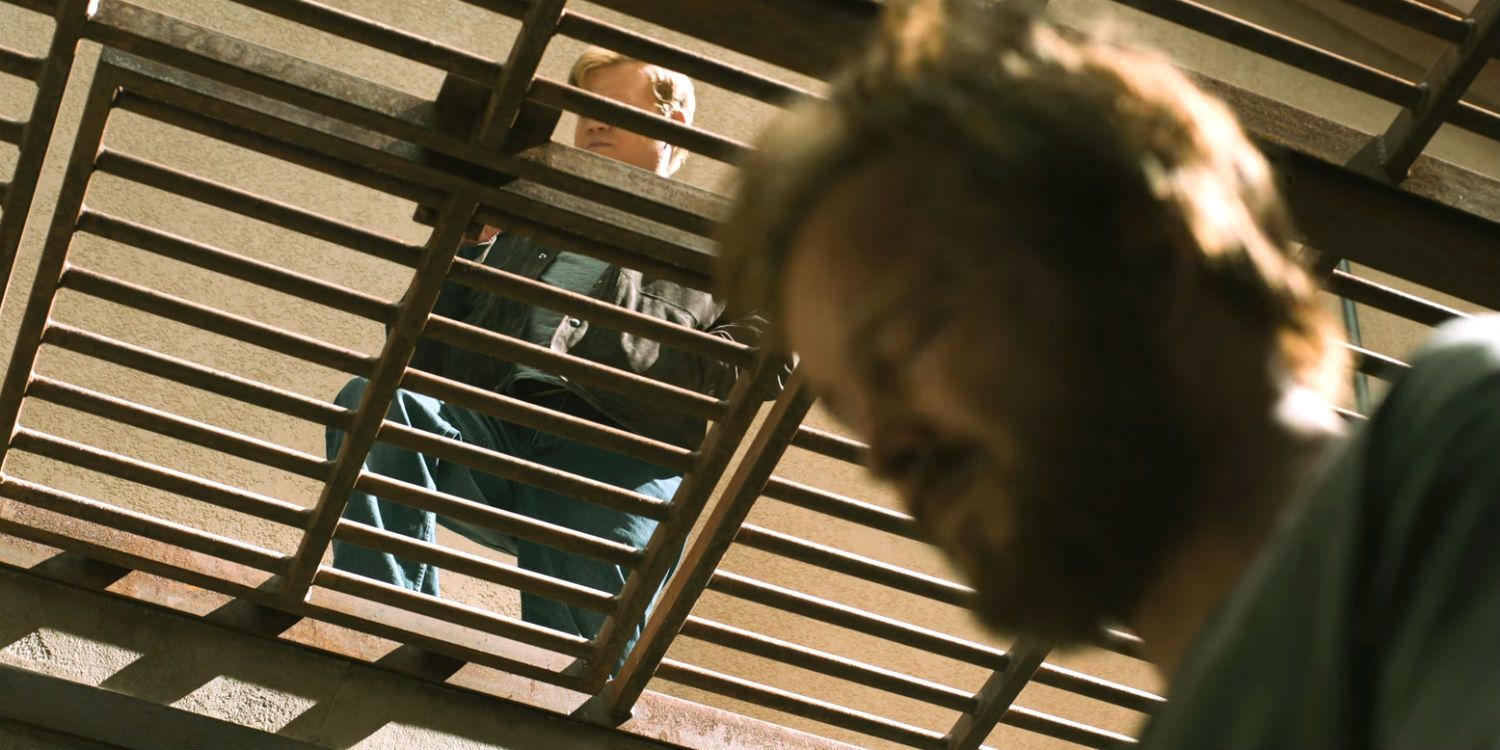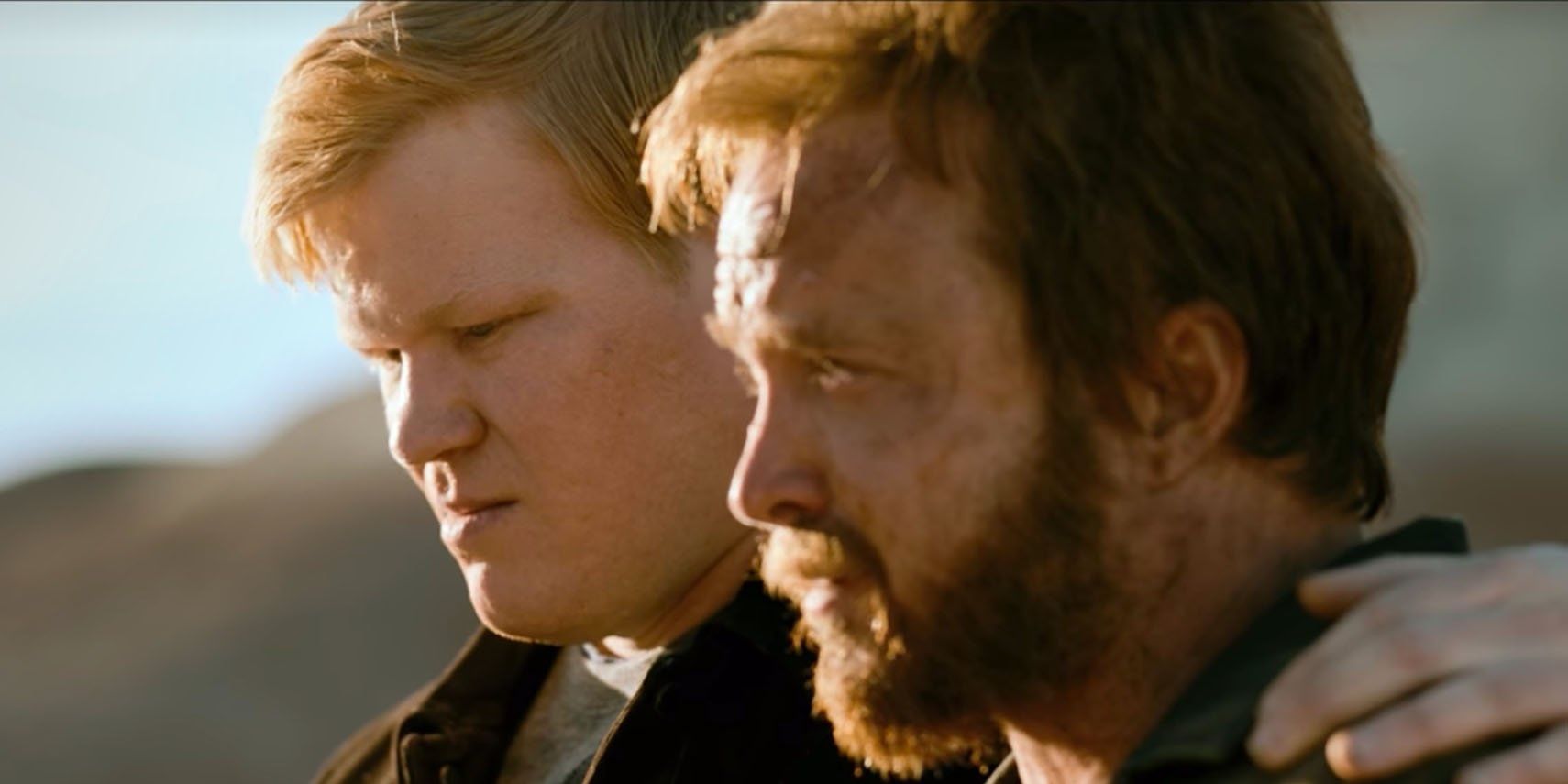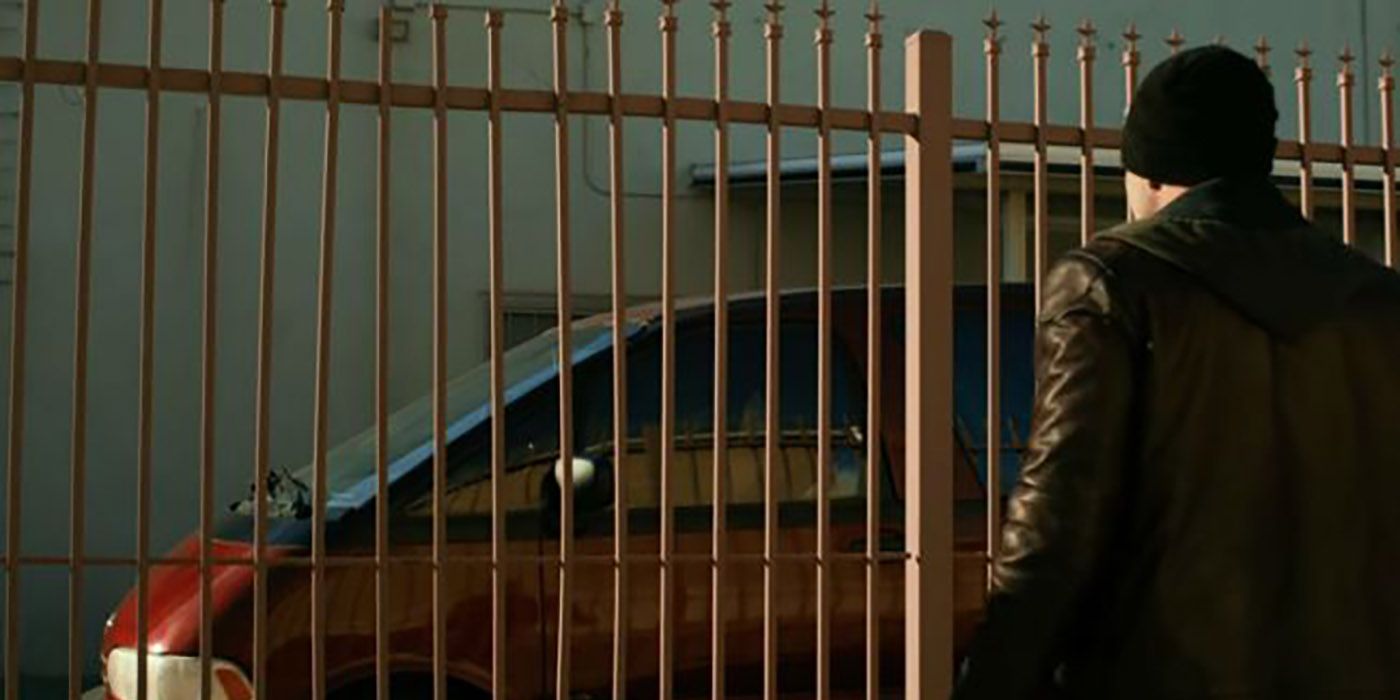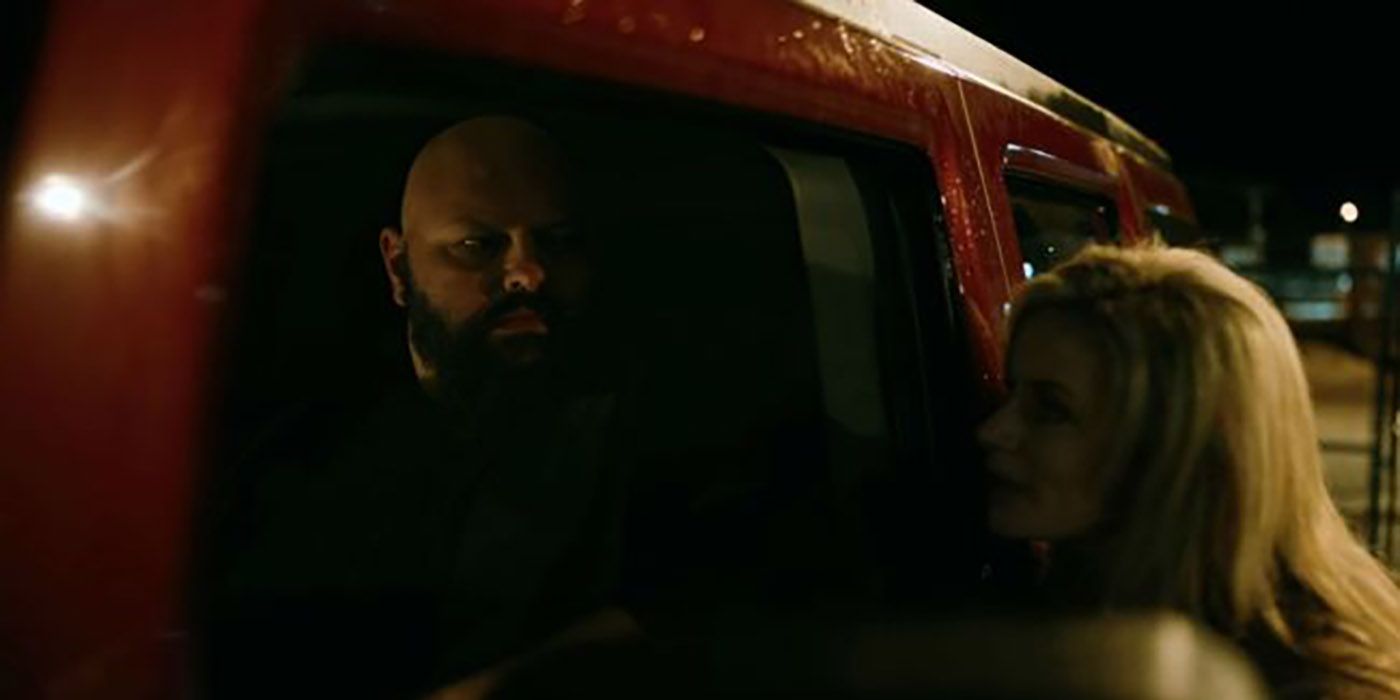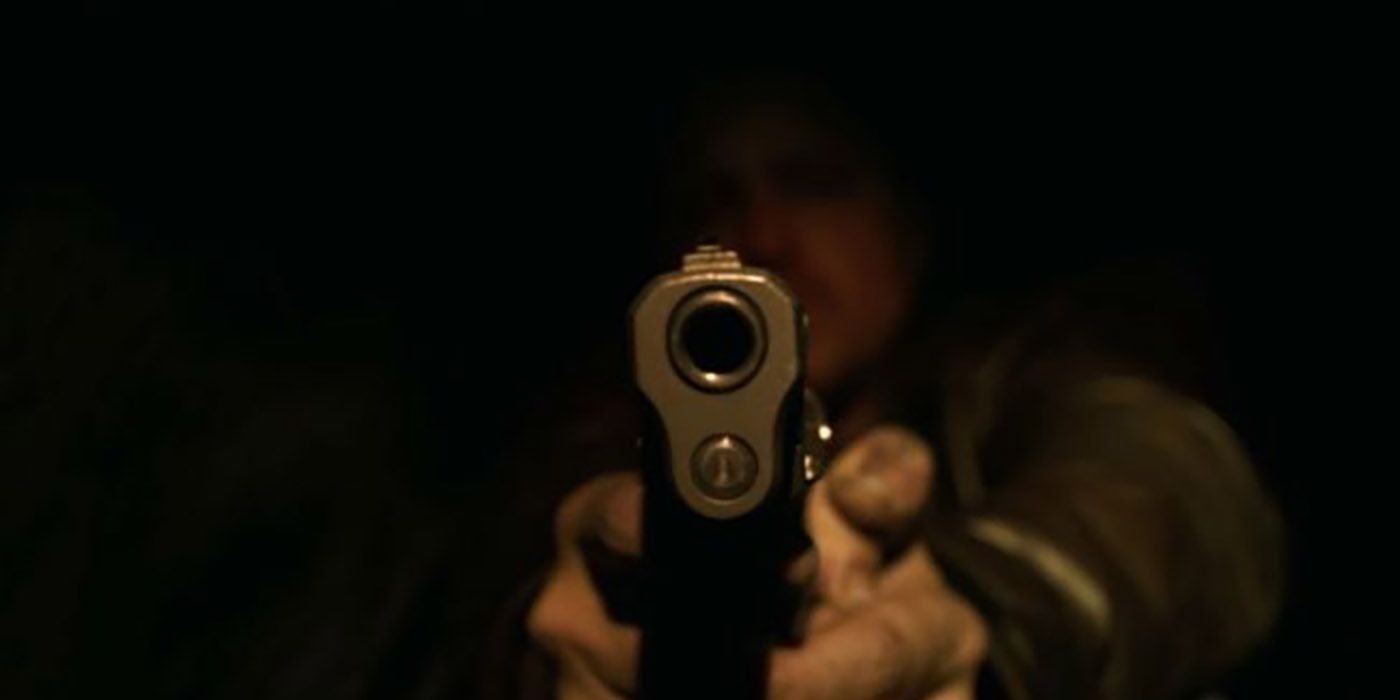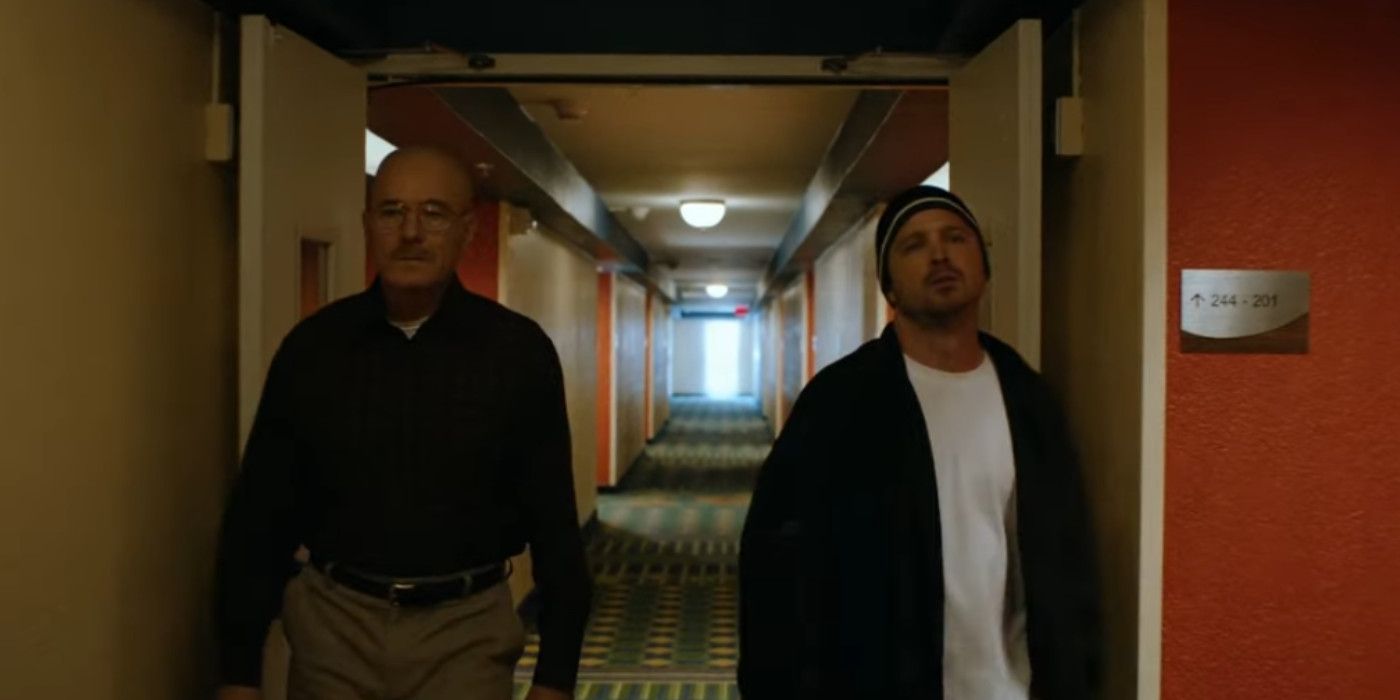Series creator Vince Gilligan has often maintained that Breaking Bad is a contemporary western, and with its desert setting and great train robbery, it’s hard to argue. With El Camino, the new spin-off movie set in the Breaking Bad universe, Gilligan went even further with the tropes and motifs of the western. But he also included plenty from the film noir genre for good measure.
These genres were chosen wisely – the western and the noir are arguably Hollywood’s two most beloved genres, at least historically. So, here are 5 Western Tropes (And 5 Noir Tropes) In El Camino: A Breaking Bad Movie.
Western: Quick-draw duel
The most obvious scene that connects El Camino to the western genre is the quick-draw duel between Jesse and Neil. Neil refuses to give Jesse the $1,800 he needs to disappear off the radar and challenges him to a duel. As Neil reaches for his gun, Jesse shoots him with a concealed second gun that he was hiding in his coat pocket.
This kind of duel is seen all the time in the climactic moments of westerns. Here, it seemed as though Neil had fantasies of being a cowboy from one of those movies and got himself killed living out that fantasy.
Noir: Morally dubious characters
In a film noir, the line between hero and villain is never black-and-white. Every character operates in a moral gray area, which is closer to real life. The cops are crooked, the criminals protect people they love – no one is 100% good and no one is 100% bad. El Camino toys around with this a lot.
Jesse is aware that he’s done bad things in the past, and questions whether or not he deserves a happy ending. But then he meets some really bad people and remembers just how deplorable humanity can be and realizes that actually, he does deserve a happy ending.
Western: Desert landscapes
Part of what made Breaking Bad feel so much like a western as opposed to a straight crime drama was its setting. It took place in Albuquerque, New Mexico, with a boatload of establishing shots of bleak desert landscapes. El Camino is no different. It ends in Alaska, which is about as far from the New Mexico desert as Jesse could get, but 95% of the movie takes place in Albuquerque.
The movie doesn’t just occasionally cut to a desert landscape, either. Some scenes actually take us there, like when Todd brings Jesse out to dig a grave for his cleaning lady.
Noir: High-contrast lighting
The easiest visual marker to use to figure out if you’re watching a film noir is high-contrast lighting. It was easier to use stark lighting techniques when every movie was shot in black-and-white, because it’s easier to see the contrast between two colors that are the literal opposite of each other.
But Vince Gilligan and his team still managed to bring the high-contrast lighting techniques of the film noir to El Camino. The shot of Jesse smoking a cigarette handed to him by Todd in his cage, with the bars shadowed onto his face by the moonlight, is pure film noir.
Western: Hero reeling from a dark past
A lot of western movies – especially the later, more cynical ones, which came along towards the end of the genre’s reign – revolve around a bitter, grizzled hero who is reeling from a dark past. The mistakes and tragedies of their past are holding them back from looking into the future.
In El Camino, Jesse has this exact problem. Breaking Bad ended with him being freed of his shackles, stealing Todd’s car, and driving off to a bright future. But in El Camino, we learn that the future isn’t so bright for Jesse, because he’s experienced a serious trauma that it’s hard to move on from.
Noir: A big bag of cash that everyone wants
The film noir is all about exposing the worst in humanity, and all the terrible things that humanity is capable of. One way that a ton of noirs have done this is by throwing a big bag full of cash into the middle of some characters and watching them fight each other for it. El Camino has its own bag of cash that everyone is after: Todd’s secret stash. Jesse knew about the cash from when Todd murdered his cleaning lady over it and brought in Jesse to help dispose of her corpse. But other characters knew about it, too.
Western: Frontier justice
At the end of El Camino, the characters don’t face justice in the traditional sense. Jesse gets away with his crimes, but not without paying a hefty price. The other criminal characters either go undetected if they’re good at heart (Badger, Skinny Pete, Mike etc.) or killed in cold blood if they’re ultimately evil (Neil, Casey etc.).
In westerns, in the absence of a civilized system of law enforcement, the characters often dole out their own brand of justice, what is known as “frontier justice.” By killing Neil and Casey and taking their money to start a new life in Alaska, Jesse enjoys some classic frontier justice.
Noir: A sprawling criminal underworld
Most film noirs follow the protagonist as they go deeper and deeper into a widespread criminal underworld. They’ll be taken down to a basement where a gang lord is operating or they’ll get abducted and brought to the office of a corrupt politician, drawing them further and further past the point of no return.
In El Camino, Jesse struggles to make his way through a sprawling criminal underworld, coming across goons disguised as cops and a criminal junkyard owner along the way. Most of them are characters who had already been featured in Breaking Bad, but it was still impressive world-building.
Western: Revenge story
A common storyline in the western genre is one man’s quest to exact revenge on the people who have wronged him. In El Camino, Jesse’s primary motivation isn’t to get revenge. He wants to scrape together enough money to get a new identity and home. However, along the way, he does get plenty of revenge.
His captors had already been killed by Walt in the Breaking Bad finale Felina, but in El Camino, he stumbled upon the welders who had rigged up the metal rail that kept him tethered to a meth lab when he was a slave. Naturally, he ended up brutally killing them.
Noir: Lots of flashbacks
One of the main hallmarks of the film noir is flashbacks, with the story starting in the middle and going back to explain the backstory over time. El Camino has an abundance of such flashbacks. This was mainly to make room for Breaking Bad actors whose characters had been killed, but each flashback was much more than a mere cameo.
They served Jesse’s character development in honest and powerful ways – from discussing leaving the meth business with Mike to a breakfast that perfectly sums up his relationship with Walt to Jane telling him to make his own decisions and forge his own destiny.

